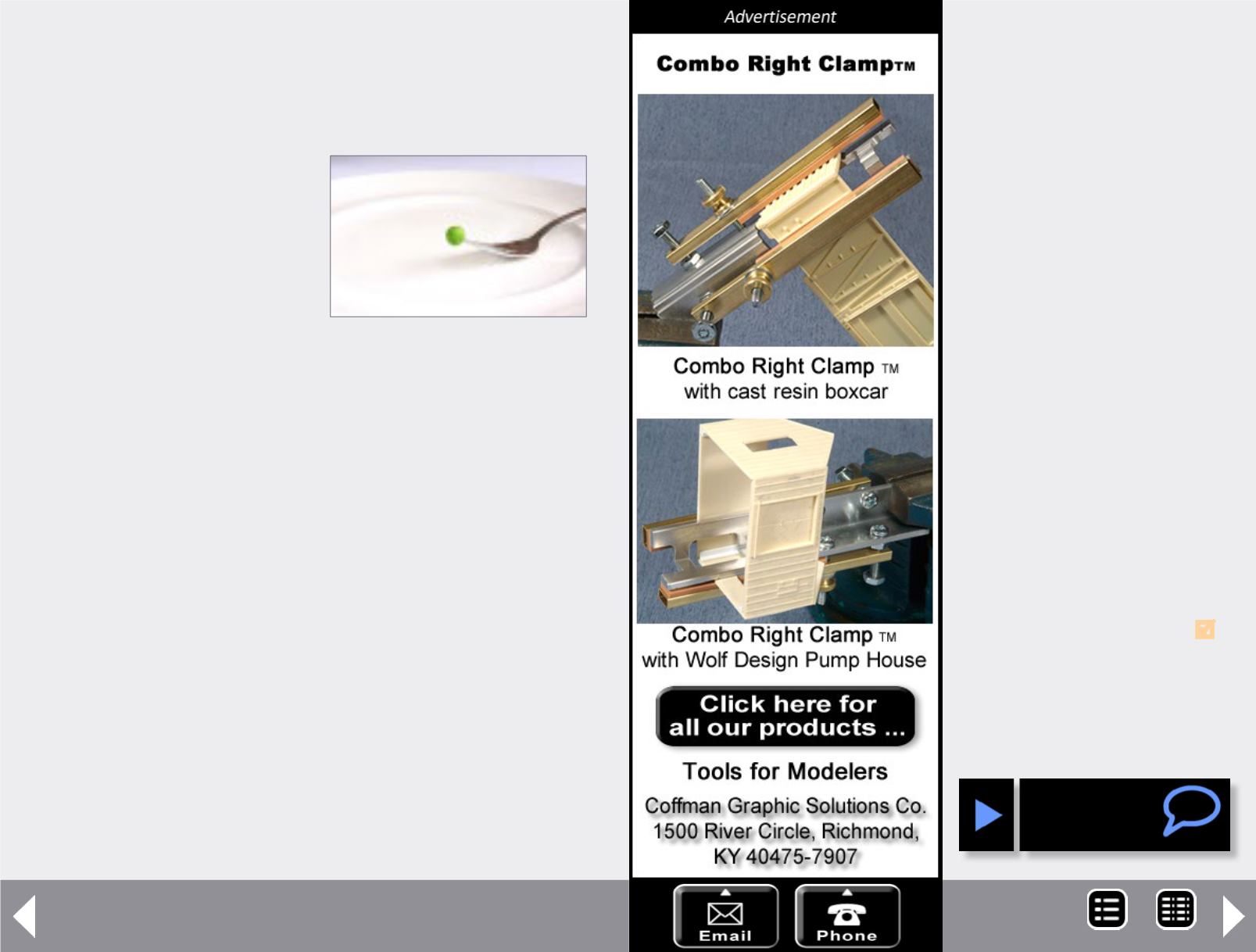
Reverse Running commentary
A
rchitect Mies Van Der
Rohe is commonly
attributed for coining
the term "less is more"
I can't speak for other cultures,
but here in North America we
seem ingrained with the idea
that bigger is better or if one is good, four must be better. As
modelers we seem to follow an unwritten law that the track-
work must fill every conceivable inch and be as complicated
as possible.
I see two problems with this mind set. While having a lot of
space is nice, we often grossly under- estimate how long it
will take or cost to build a layout to an operational phase, let
alone scenic it.
Lets assume you estimate it will take 200 hrs to build your lay-
out, from starting the benchwork to running trains. Now lets
assume that you are average and spend two or three hours per
week on the layout, with no time on rolling stock or structures.
That means it will take between 67 and 100 weeks to get your
layout to an operational status.
The other is maintenance. Sorry to burst your bubble, but no
matter how careful you were with your track laying, you will
eventually begin pulling maintenance on it. Now think about
the layout as a whole, with everything you want on it. The
maintenance requirements will increase, not decrease.
Reverse Running: Stepping outside the box with a contrary view
by Don Hanley
Less is more?
So before you start building
the massive dream layout,
take time to plan: consider
time requirements, costs,
skills needed, etc. If you
still want to have the huge
dream layout, go for it. If
not, scale back your plans.
But in either case, lets take it
in phases. Build it in sections
with the minimum track
needed so you can begin
operations sooner. You can
always add more track latter.
You may find that even a
reduced layout takes more
time than you think, or that
you may like a more mini-
malist track appearance.
Make sure you own the lay-
out and it doesn't own you.
Hmm . . . maybe less is more.
MRH-Jul 2013


